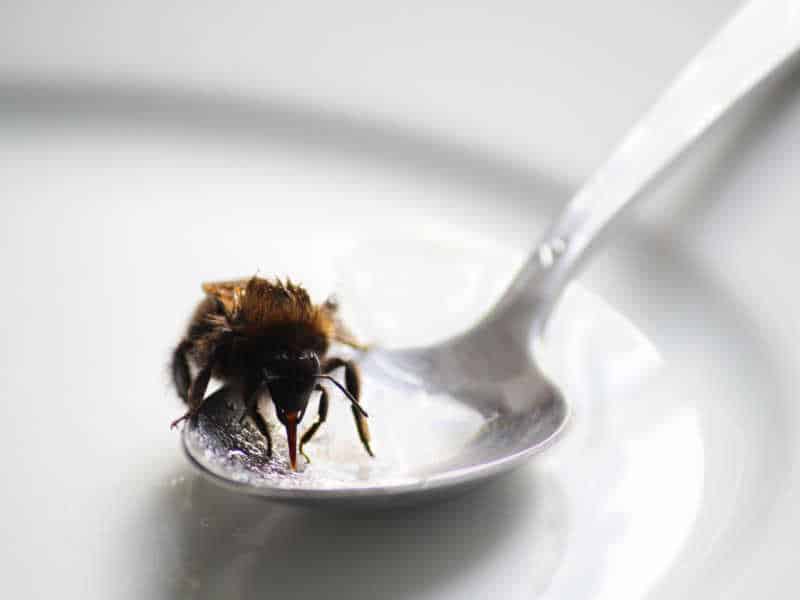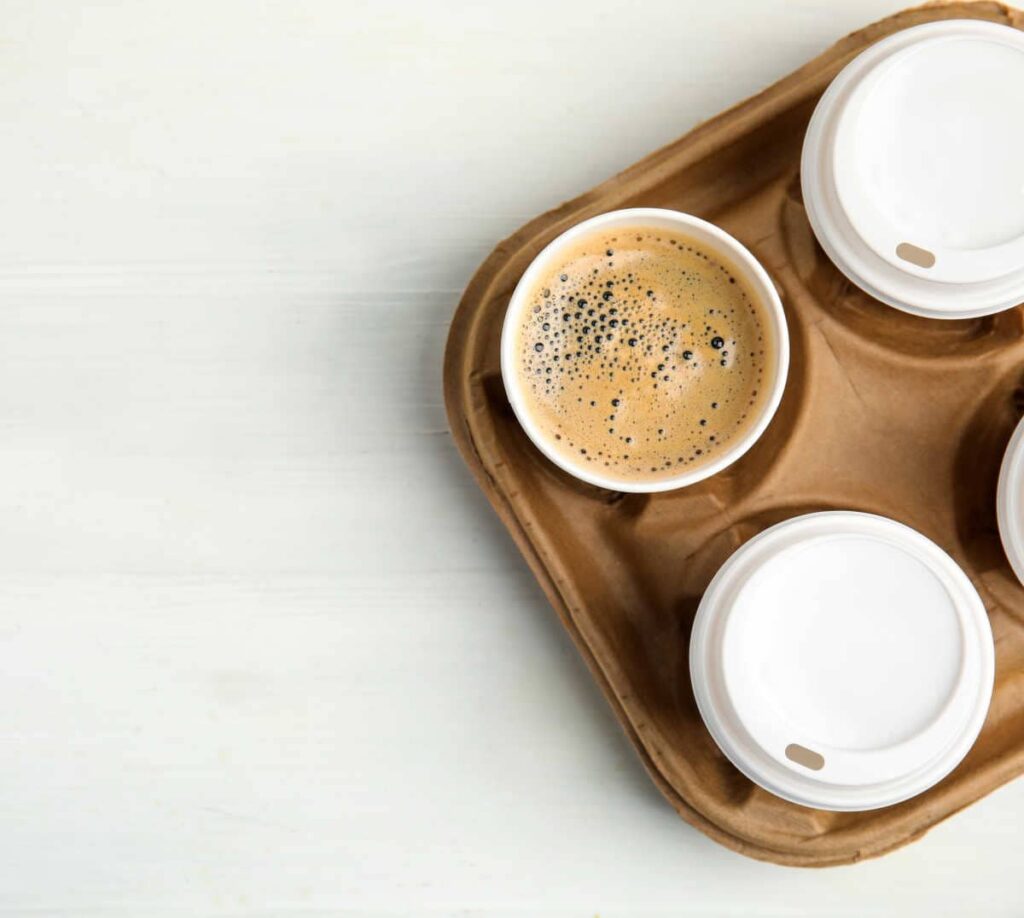How To Reduce Food Waste With 10 Easy Tips
To support the running costs of Moral Fibres, this post contains affiliate links. This means Moral Fibres may earn a small commission, at no extra cost to readers, on items purchased through these links.
Slim your compost bin and cut your food bills with these easy tips to reduce food waste.
Food waste is a huge issue. Food production is one of the biggest contributors to climate change. In fact, about one-third of greenhouse emissions globally come from agriculture.
Despite this, both at the household level and at the manufacturing level, we are very wasteful when it comes to food. 30% of the food we produce is wasted – about 1.8 billion tonnes of it a year. So much so, that it has been estimated that if food waste was a country, it would be the third-highest emitter of greenhouse gases after the US and China.
Thankfully we don’t have to add to these statistics. There are heaps of easy ways to cut down on the food we waste at home, helping both the planet and our pocket.
10 Easy Tips to Reduce Food Waste
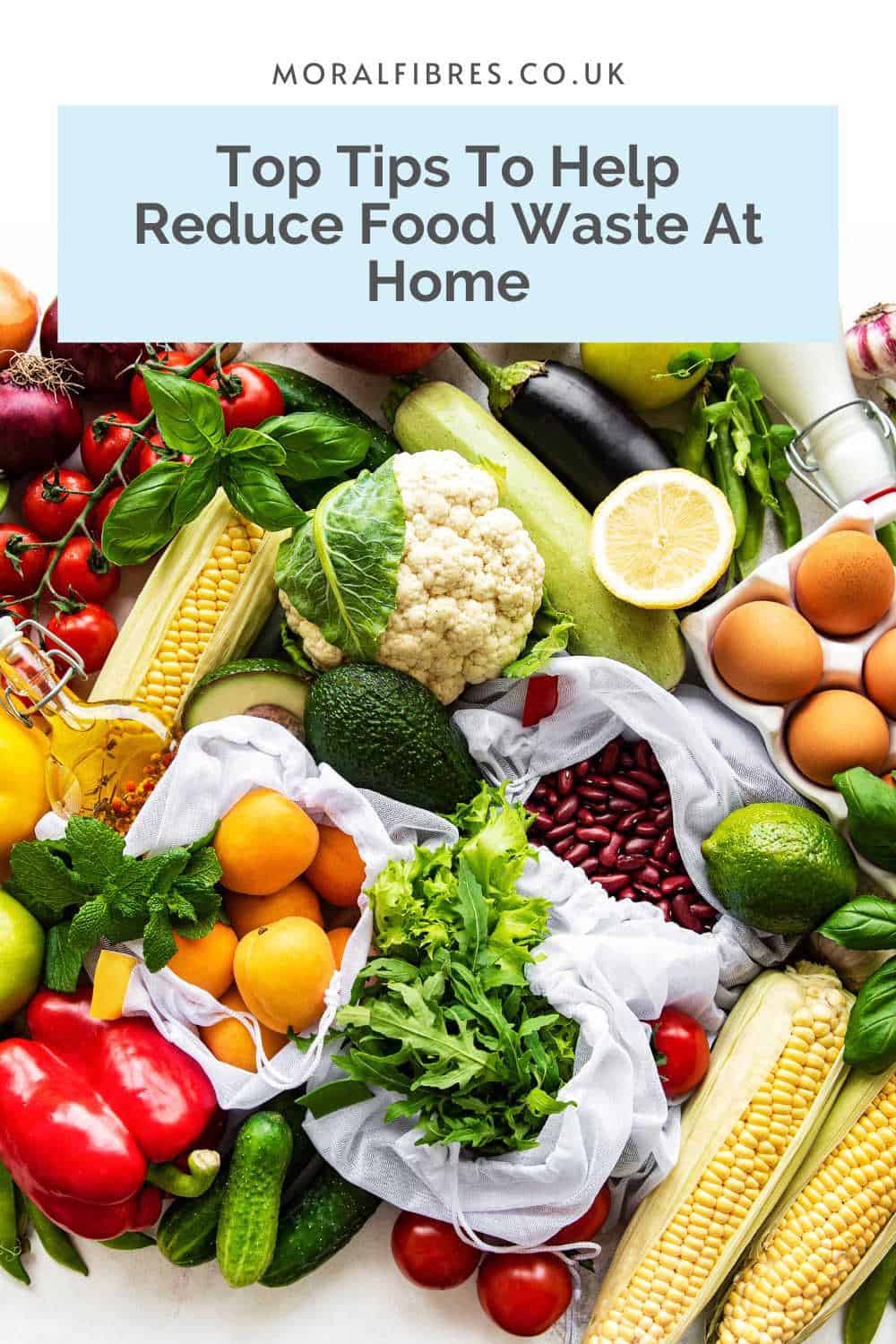
To help reduce your food waste, I’ve got 10 easy tips for you that help the planet while cutting down on your food bills:
- Plan Ahead
- Make A List (And Stick To It)
- Monitor Expiry Dates
- Adopt The First In, First Out Method
- Get Savvy With Storage
- Love Your Leftovers
- Regrow Vegetable Scraps
- Use Every Bit
- Preservation’s What You Need
- Compost Your Food Waste
1. Plan Ahead
Meal planning is central to reducing your food waste. It not only reduces the chances of ingredients going unused but also helps you make the most of leftovers. Plus meal planning cuts down on unnecessary supermarket purchases. Especially those tempting end-of-aisle offers that could see you stock up on more than you need. You’ll save money and cut down on waste.
Planning your meals doesn’t have to be cumbersome. Once a week, sit down and plan your weekly meals – including breakfast, lunch and dinner. Knowing exactly what you need minimises overbuying and ensures that every ingredient serves a purpose. Plus, leftovers become a planned encore rather than a forgotten finale.
You can use the notepad app on your phone, a piece of paper, a meal planning pad like this one from Not On The High St, or a meal planning template online. Whatever works for you.
I’ve found that taking 15 minutes to plan ahead each week saves time and stress. Plus it saves you from staring at the contents of your fridge wondering how on earth to cobble together something edible for dinner from ingredients that don’t seem like they would go together.
2. Make A List (And Stick To It)
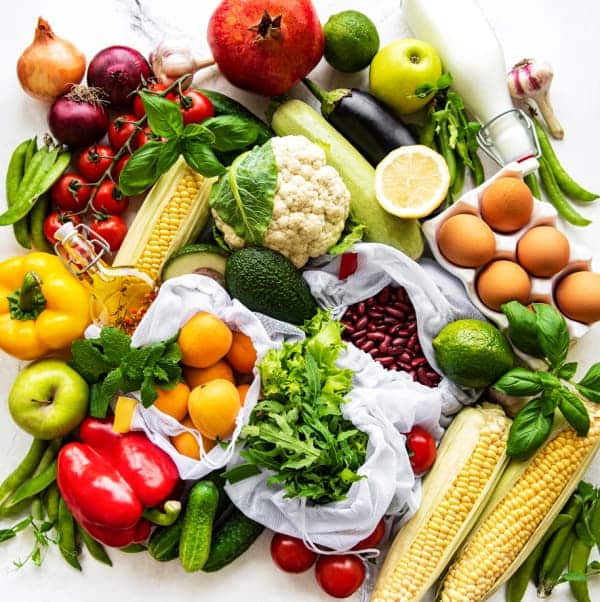
It’s not just Santa that makes a list and checks it twice. No. Food waste fighters make one too. After all, keeping a list means you can navigate the supermarket aisles with purpose, immune to the lure of impulse buys. It’s a bit like a shield and helps ensure you only bring home what you need.
It may feel like a small thing that’s easy to overlook. But actually, making that list is a huge step towards a waste-free kitchen. Overlook it at your peril!
3. Monitor Expiry Dates
Keep a close eye on the expiry dates of your food, especially for perishable items, so that you can use them up before they go off. However, remember that best before and use by dates mean different things.
The Best Before date relates to food quality rather than lifespan. When the date runs out, it doesn’t mean that the food will be off or unsafe to eat. Instead, it means that beyond this date, the item is not guaranteed to be at its optimum freshness.
Generally, if the food has been stored correctly, looks okay, smells okay, and tastes okay after its best-before date then it’s good to eat.
In contrast, the use by date relates to food safety. This means that you can cook, eat and freeze food up until and on the use-by date but not after. After the displayed date, it is highly likely that the food will be off and could make you sick.
Do bear in mind that the use-by date is only valid if the storage instructions printed on the packaging have been followed. For example, if an item says to keep refrigerated, then it must have been stored in your fridge for it to be safe to eat.
4. Adopt The First In, First Out Method
My parents and my grandparents were grocers, so I was brought up on the First In, First Out (FIFO) method. This is a stock rotation method that they used in their shop to help minimise wastage. As it works so well, my mum used it at home to help reduce food waste. It just makes a lot of sense.
Thankfully it’s not a complicated system to adopt. All it means is that when you’re stocking your cupboards or fridge after you’ve been to the shops, you put items with the soonest expiry dates at the front. Items with the longest expiry dates should then be placed at the back.
With this system, this means that you’re always using older items first. This ensures nothing gets forgotten and expires in the depths of your fridge or cupboards.
5. Get Savvy with Storage
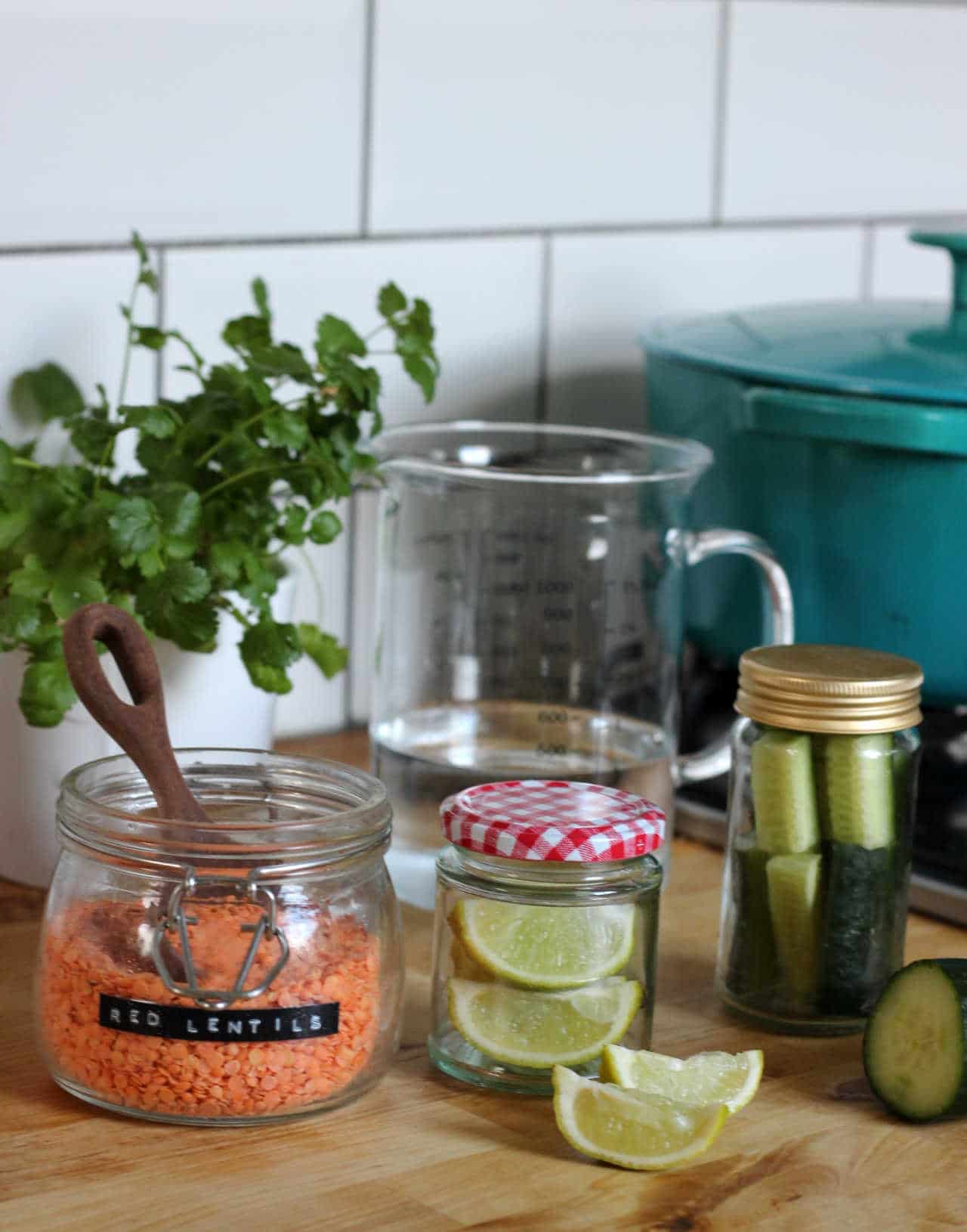
Storing your food correctly doesn’t have to mean going out and buying a load of storage containers. It can mean taking 5 minutes to learn how to store fruit and vegetables correctly.
After all, some like to be stored in the fridge. Meanwhile, spring onions like to be stored in water. Others prefer to hang out at room temperature and others like it cool, dark and dry. Getting storage right is the difference between something lasting and something shrivelling up in the blink of an eye.
Of course, what we store our food in is also important in reducing food waste. After all, proper storage can extend the life of your food.
While there are tons of food storage options out there, my top tip is to embrace glass – whether that’s a glass jar you’re reusing or glass tupperware that you’ve upgraded to. This is because clear containers mean you can easily see at a glance what you’ve got that needs eating, and are easily recyclable at the end of its life.
The freezer is also your friend. As well as freezing the usual suspects, you can also freeze a whole manner of unexpected items – from freezing lemons to freezing oat milk and coconut milk (tinned as well as UHT).
6. Love Your Leftovers
Whether you make a hearty soup from roasted leftover veggies or are using up black bananas to create a delicious smoothie, using up your leftovers is a great way to reduce your food waste, whilst keeping your food costs to a minimum.
There are heaps of resources out there to help you make the most of your leftovers. For example, BBC Good Food has a whole leftovers recipe collection showing you how to make everything from pies, salads, puddings and pasta bakes from leftovers. Meanwhile, Love Food, Hate Waste has a great recipe finder for any leftover food you may have.
7. Regrow Vegetable Scraps
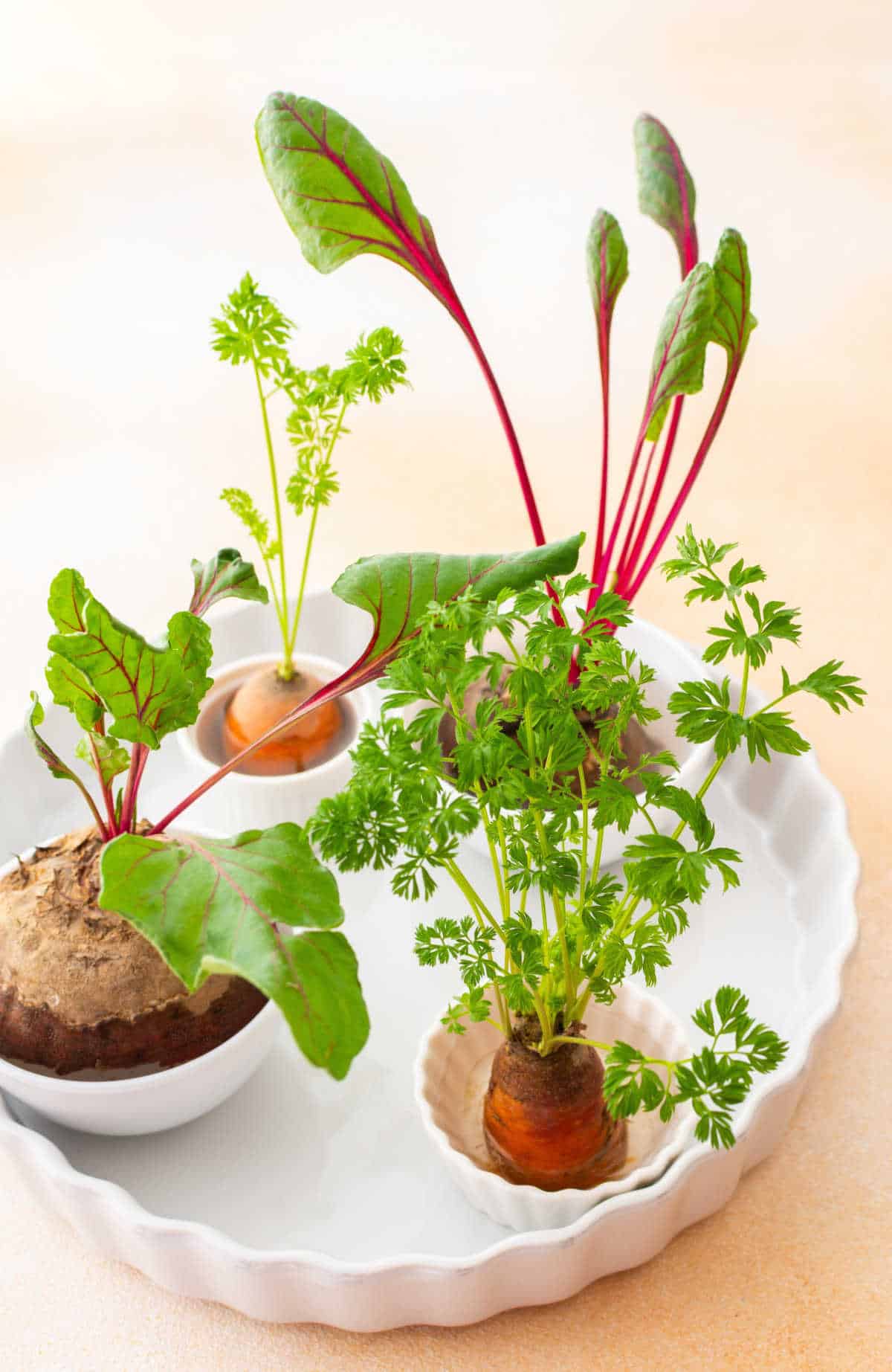
Did you know that some vegetable scraps can be regrown at home? Yup, things like the ends of spring onions, the bottom of your lettuce, or an old chunk of ginger can be regrown. It’s a super thrifty way to reduce your food waste, whilst being rewarded with cheap fresh produce.
8. Use Every Bit
When preparing fruit and vegetables, most of us are guilty of binning the bits we don’t need. However, with a bit of creativity you can make something from the scraps you would normally discard:
- Vegetable peelings can be used to make vegetable stock.
- Pumpkin or butternut squash seeds can be roasted to make a tasty and healthy snack out of something you’d otherwise throw away.
- Even potato and vegetable peelings can be used to make crisps without the plastic packaging.
- Leftover bread can also be used up. You can make breadcrumbs that can be stored in the freezer, or use them in dishes such as bread and butter pudding or Panzella – an Italian dish that specifically requires stale bread to make it.
9. Preservation’s What You Need
Explore food preservation techniques like jamming, freezing, pickling and dehydrating. These methods not only extend the life of your favourite seasonal fruits and veggies but also let you savour their goodness year-round.
One of my favourite ways to reduce food waste is to dry mushrooms in the oven. It’s such a great way to preserve any mushrooms you haven’t managed to eat. Drying mushrooms really intensifies their flavour, and dried mushrooms can be kept in a jar for 6 months or more. They are so tasty when added to soups, stews, casseroles, and chillis – particularly vegan dishes.
12. Compost Your Food Waste
Sometimes, despite our best efforts, food waste happens. When it does, don’t beat yourself up about it. Instead, try to compost your food waste.
Composting is really important, as when food breaks down in landfill it releases methane gas – a potent greenhouse gas that warms the planet at a much faster rate than carbon dioxide. Food does this when it breaks down without the presence of oxygen, such as in tightly packed landfill sites.
Composting food means the food breaks down in the presence of oxygen, so it doesn’t release methane. Whether you compost at home, where you turn your waste into nutrient-rich soil for your garden, or whether you pop it in your food waste bin for collection by your local council, it’s all good.
Any food tips I’ve missed that help you reduce your waste?
And want to delve further? Check out my guide to zero-waste kitchen tips for advice on making your kitchen plastic-free. And you can also check out my handy guide on how to reduce food waste at Christmas to help cut your waste in the festive season.
Found this post useful? Please consider buying me a virtual coffee to help support the site’s running costs.

